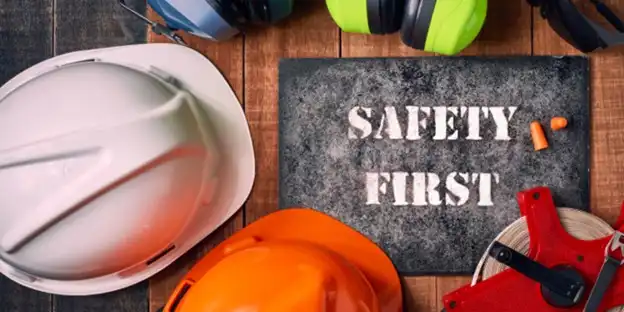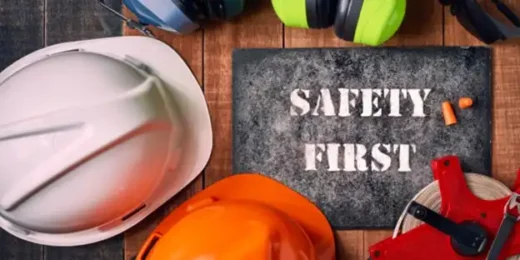Workplace safety laws in construction employers guide, Safe employee advice, Office H&S
Workplace Safety Laws In Construction Employers Guide
7 March 2025
Workplace Safety Laws In Construction: What Employers Must Know
Construction sites are where blueprints become reality, but they’re also places where safety can’t be taken for granted, as construction work can be dangerous, which is why safety is super important. Plus, A safe work environment is also a productive and efficient one.
This blog provides a detailed overview of workplace safety laws in construction and outlines the key responsibilities of employers to maintain compliance.
Importance of Workplace Safety in Construction
Workplace safety in the construction industry is more than just a legal requirement; it is a moral obligation to protect the lives and health of workers. The industry presents various risks, such as falls, machinery-related accidents, and exposure to hazardous substances.
Implementing safety protocols and adhering to workplace safety laws help prevent injuries, reduce downtime, and create a positive work environment.
Compliance with these laws is essential to avoid construction disputes and potential legal actions, which may require the expertise of a construction dispute lawyer.
Employer Responsibilities Under Workplace Safety Laws
Employers in the construction industry have a fundamental duty to ensure workplace safety. These responsibilities are clearly defined to protect workers from preventable accidents. Here are the primary responsibilities:
- Ensuring a Safe Work Environment: Employers must provide a workplace free from known hazards. This includes maintaining equipment, securing scaffolding, and ensuring clear access paths.
- Conducting Risk Assessments and Hazard Identification: Regular risk assessments help identify potential dangers on-site. Employers must implement control measures to mitigate identified risks and document these processes for compliance purposes.
- Providing Necessary Safety Training and Education: All workers should receive training on workplace hazards and safety protocols. This includes initial training for new employees and ongoing refresher courses to reinforce safety standards.
Seeking guidance from construction lawyers can help employers understand their legal obligations and establish compliant safety practices.
Employee Rights and Responsibilities
While employers bear significant responsibility for workplace safety, employees also have essential rights and obligations. Awareness of these aspects can help create a safer, more cooperative work environment. Key areas include:
- Right to a Safe Workplace: Employees are entitled to a safe and healthy working environment. If safety concerns arise, workers have the right to report these issues without fear of retaliation.
- Employee Obligations for Maintaining Safety Standards: Workers must follow established safety procedures, use protective equipment correctly, and participate in safety training programs.
- Whistleblower Protections and Reporting Unsafe Practices: The law protects whistleblowers who report unsafe work conditions. Employees should feel empowered to raise concerns about potential hazards without facing adverse consequences.
If safety concerns are ignored, consulting personal injury lawyers in Sydney can provide workers with guidance on their legal rights and options.
Common Hazards on Construction Sites
Construction sites are inherently hazardous due to the nature of the work involved, which is why employers must be aware of common risks and implement measures to address them:
- Falls from Heights and Ladder Safety: Falls are one of the most common causes of workplace injuries in construction. Proper fall protection systems, such as guardrails and harnesses, are essential.
- Machinery and Equipment-Related Accidents: Malfunctioning or improperly operated machinery can cause severe injuries. Regular maintenance and operator training help reduce these risks.
- Exposure to Hazardous Substances and Chemicals: Construction materials may contain harmful chemicals. Workers must have access to appropriate protective equipment and training on safe handling procedures.
- Electrical Hazards and Fire Safety: Electrical work presents significant risks, including shocks, burns, and fires. Employers should implement lockout/tagout procedures and provide fire safety training.
- Noise Pollution and Hearing Protection: Prolonged exposure to high noise levels can cause hearing loss. Providing ear protection and conducting regular noise assessments are crucial preventive measures.
Employers unsure about legal obligations in these areas can seek assistance from construction lawyers in Sydney.
Workplace Safety Training and Education
Comprehensive training programs are vital for preventing accidents and creating a safety-conscious culture. Effective training involves several key components:
- Mandatory Safety Training Programs: Australian regulations mandate certain training programs for construction workers, including induction courses and site-specific safety orientations.
- Importance of Ongoing Education and Refresher Courses: Workplace safety standards evolve, and ongoing education ensures that workers remain informed about the latest practices and regulations.
- Best Practices for Training Employees Effectively: Practical, hands-on training sessions are often more effective than theoretical instruction. Interactive training methods, such as workshops and safety drills, help reinforce critical safety concepts.
Employers can collaborate with legal professionals, such as commercial lawyers in Parramatta, to develop training materials that align with regulatory requirements.
Construction Industry Workplace Safety Laws Conclusion
Workplace safety in the construction industry requires a proactive, informed approach from both employers and employees. By understanding and adhering to the safety laws, construction businesses can protect their workforce, avoid legal complications, and maintain operational efficiency. Employers should consider consulting construction lawyers to stay updated on their legal obligations and address any construction disputes that may arise.
Remember, prioritising safety is not an expense, but rather a crucial investment in the future of your business and the lives of your employees.
Comments on this guide to Workplace safety laws in construction employers article are welcome.
+++
Construction Safety
Construction Safety Posts
Office building safety takes centre stage
Prevent construction site accidents
How architecture adapts to evolving safety regulations
Common construction site injuries
Construction industry health and safety importance
Why Construction Safety Is Important
Best practices to improve construction site safety
+++
Building Articles
Comments / photos for the Workplace safety laws in construction employers – building site H&S advice page welcome.







